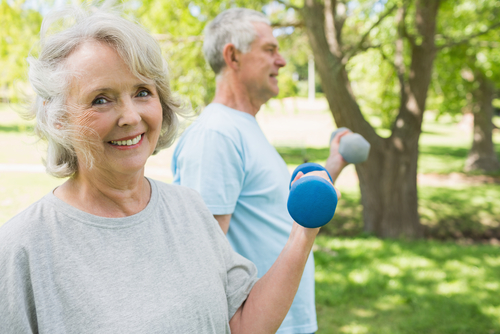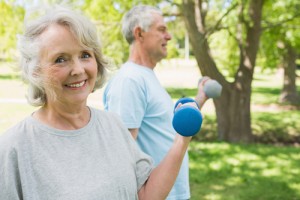New PAH Research Highlights Effect of Disease on Muscles, Importance of Exercise

 Exercise and fitness are two health factors that invariably affect prognoses for most chronic, progressive diseases. Given the stress and immobility that come as a result of illness, maintaining fitness to the best of the patient’s ability is generally a best practice for maximizing quality of life and lifespan. However, new PAH research suggests that patients’ muscles are affected by the disease at the cellular level, and that any measure of exercise can have a palpably positive impact on health and well being.
Exercise and fitness are two health factors that invariably affect prognoses for most chronic, progressive diseases. Given the stress and immobility that come as a result of illness, maintaining fitness to the best of the patient’s ability is generally a best practice for maximizing quality of life and lifespan. However, new PAH research suggests that patients’ muscles are affected by the disease at the cellular level, and that any measure of exercise can have a palpably positive impact on health and well being.
A new review study entitled “Pulmonary arterial hypertension-related myopathy: An overview of current data and future perspectives” recently published in the Nutrition, Metabolism and Cardiovascular Diseases journal, presents the most-recent data on respiratory and muscle dysfunctions associated with Pulmonary Arterial Hypertension.
[adrotate group=”4″]
Pulmonary Arterial Hypertension (PAH) is one form of pulmonary hypertension and is characterized by increased blood pressure in lung arteries due to their abnormal constriction. PAH-related symptoms include shortness of breath, dizziness, fainting, leg swelling. Therefore, PAH patients have decreased exercise tolerance to the disease frequently escalating to heart failure. PAH-associated exercise impairment is determined by abnormally low oxygen levels in the blood, right ventricular hypertrophy and skeletal and respiratory muscle weakness.
In the recently published review, the authors analyzed both animal and clinical studies in a comprehensive manner, and described the effect of exercise training on PAH patients’ muscle activity.
[adrotate group=”3″]
According to the literature review, PAH patients’ skeletal muscles exhibit a wide range of cellular abnormalities, including increased protein degradation; impaired mitochondrial and excitation-contraction coupling; reduced anabolic signaling; low oxygen in the blood; and an increase in inflammatory responses. All these features lead to muscle atrophy, reduced muscle mass, force, and contractility.
Notably, careful design exercise training is recognized to improve PAH patients’ symptoms and general well-being. It improves muscle strength and exercise capacity. Moreover, exercised muscles utilize oxygen more efficiently, thus peaking oxygen uptake, while patients’ confidence is increased during physical activity. Thus, in general exercise improves muscle function and has a significant positive impact in PAH patients’ lives.







